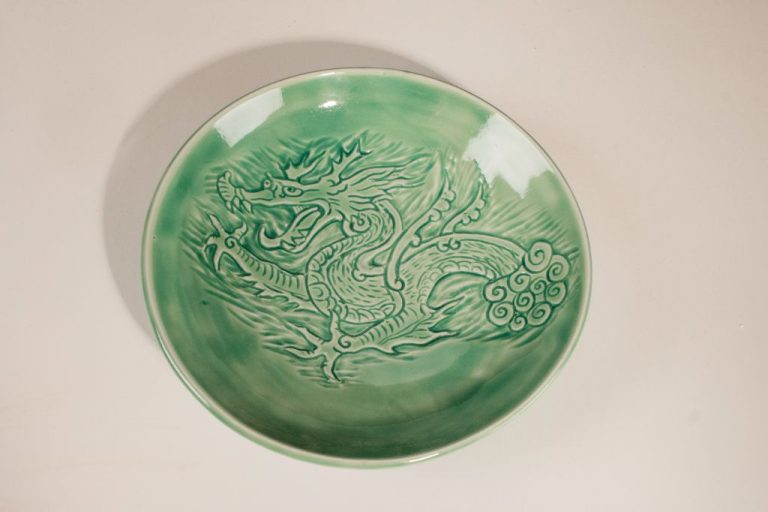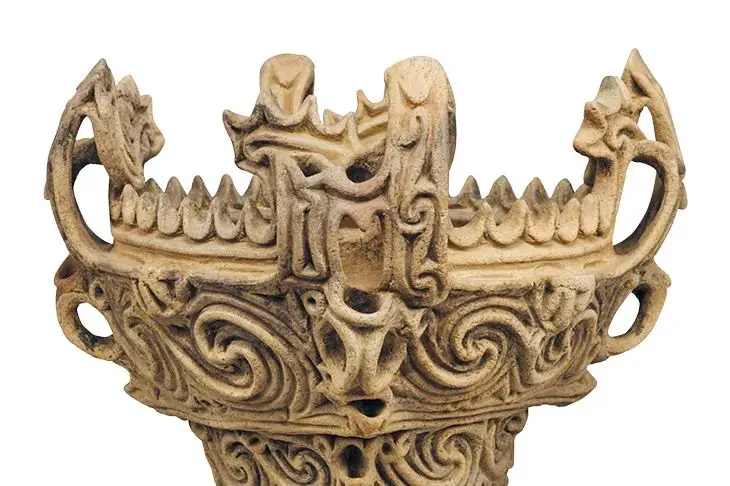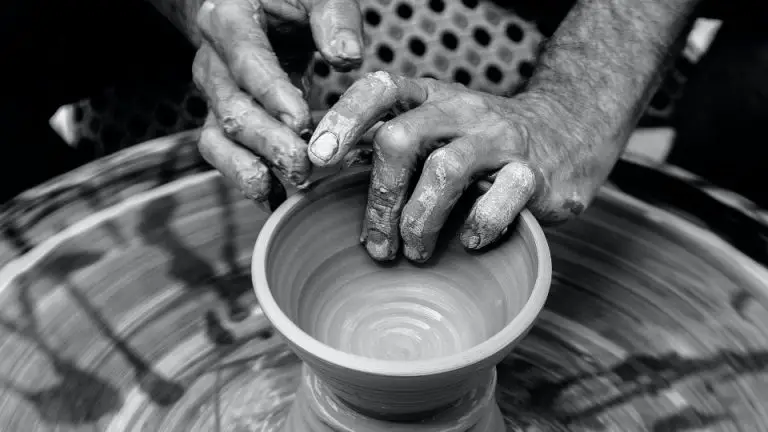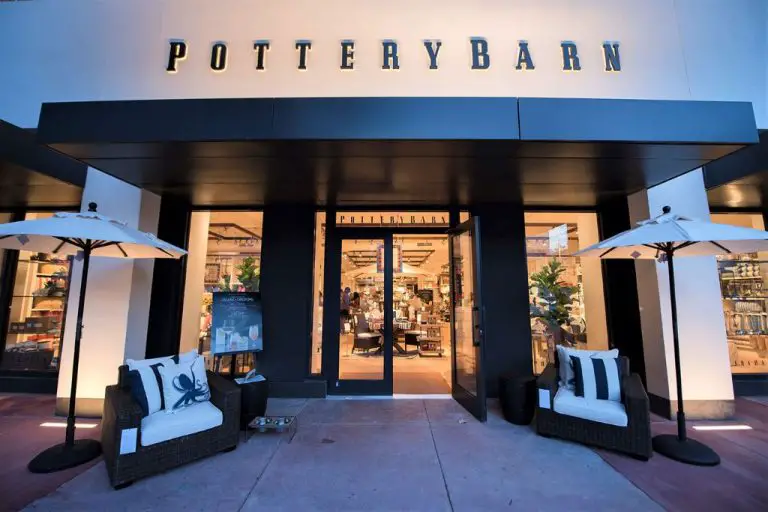What Is The History Of Pottery Barn Kids?
Pottery Barn Kids is a popular home furnishings retailer that specializes in children’s furniture, bedding, decor, and more. The company was founded in 1999 as an offshoot of the successful Pottery Barn brand. Pottery Barn Kids offers high-quality, stylish products for nurseries, bedrooms, playrooms and more. It has become a top destination for parents looking to design fun, functional and beautiful spaces for their kids. The brand focuses on timeless designs and natural, sustainable materials. Today, Pottery Barn Kids operates over 100 stores across the United States and Canada as well as a thriving ecommerce business. It has established itself as a leader in the kids home furnishings market.
Origins
Pottery Barn Kids was founded in 1999 in San Francisco as part of the Williams-Sonoma portfolio of brands. The aim was to bring Pottery Barn’s aesthetic to a children’s furniture and accessories line. Pottery Barn Kids launched with an extensive catalog of cribs, changing tables, dressers, and other nursery furniture pieces designed in-house. The brand quickly grew its product selection to encompass bedding, lighting, toys, gear, and decor for kids’ rooms, playrooms, and bedrooms.
According to CB Insights, Pottery Barn Kids was founded in 1999 as part of Williams-Sonoma to bring Pottery Barn’s aesthetic to children’s home furnishings. The launch included an extensive catalog of nursery furniture designed in-house.
Early Years
Pottery Barn Kids was launched in 1999 as a spin-off brand from Pottery Barn, targeting children’s home furnishings. The first Pottery Barn Kids catalog debuted in Spring 1999, offering cribs, changing tables, toy storage, and other nursery furniture and accessories.
The first freestanding Pottery Barn Kids store opened in July 1999 at The Westchester mall in White Plains, NY. By the end of 1999, the company had opened 9 Pottery Barn Kids stores across the United States. The early stores focused on nursery furniture and accessories for newborns to toddlers.
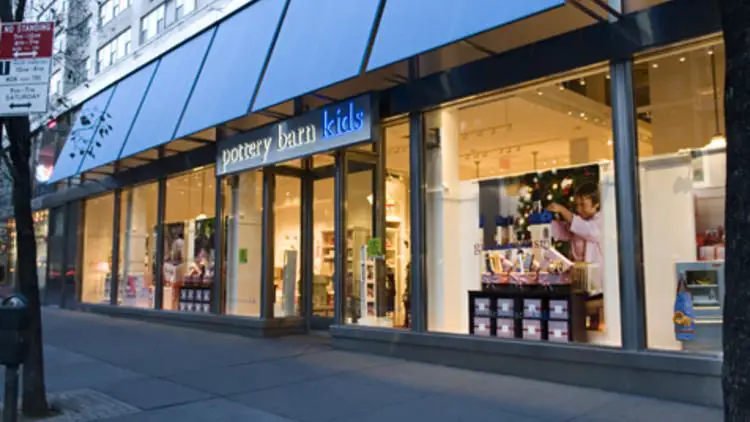
According to Wikipedia, “By 2000, the company had launched an e-commerce website, potterybarnkids.com, to offer online shopping and expand the customer base beyond physical retail stores.” [1]
Product Expansion
Over the years, Pottery Barn Kids has greatly expanded its product lines beyond just furniture and decor to offer a comprehensive selection for children’s spaces. In the early 2000s, Pottery Barn Kids began offering bedding, rugs, lighting, and storage solutions to complement the furniture (https://www.potterybarnkids.com/shop/bedding/). By the mid-2000s, Pottery Barn Kids carried over 2,000 products across furniture, textiles, and decorative accessories (https://www.potterybarnkids.com/shop/toys-gifts/).
In recent years, Pottery Barn Kids has continued expanding into new product categories like toys, games, arts and crafts supplies, and seasonal gifts to become a one-stop shop for children’s spaces (https://www.potterybarnkids.com/shop/toys-gifts/kid-all-toys/). Some of the major toy brands now carried include Lego, Magna-Tiles, Playmobil, Gund, and Green Toys. Pottery Barn Kids also sells kids furniture, decor, and accessories themed around popular entertainment brands like Disney, Warner Brothers, and Marvel.
Store Growth
Pottery Barn Kids began expanding its retail store presence across the United States in the early 2000s. The brand opened its first stores in major markets like New York, Los Angeles, and Chicago. By 2010, Pottery Barn Kids had over 75 stores across the country. The retail expansion enabled customers to see and experience Pottery Barn Kids products in person before purchasing online or through catalogs. This omnichannel approach provided convenience and reinforced the brand image. Today, Pottery Barn Kids continues to open new retail locations to engage customers and drive sales.
International Expansion
In the early 2000s, Pottery Barn Kids began expanding internationally beyond the United States. The first international stores opened in 2001 in Toronto, Canada. Several more Canadian locations opened over the next few years in Calgary, Edmonton, and Vancouver.
In 2008, Pottery Barn Kids opened its first location outside of North America in Sydney, Australia. Additional Australian stores followed in Melbourne and Brisbane. The expansion into Australia represented a major milestone for Pottery Barn Kids as it established a presence in the Asia-Pacific region.
Later in the decade, Pottery Barn Kids set its sights on the Middle East, opening stores in Dubai and Kuwait. The Dubai location, which opened in 2010, marked the company’s first venture into the Middle Eastern market. With its appealing mix of locally inspired design and imported Americana style, Pottery Barn Kids found an audience among affluent families in the region.
By establishing footholds in Canada, Australia, and the Middle East, Pottery Barn Kids successfully transitioned from an American brand to an international retailer. Its global expansion strategy enabled the company to grow its customer base and increase brand awareness worldwide.
Recent Developments
In recent years, Pottery Barn Kids has focused on growing its ecommerce business and expanding its sustainability efforts. In 2022, the company reported that online sales increased to over 50% of total revenue. Pottery Barn Kids has invested heavily in improving its website, mobile apps, and omnichannel capabilities to cater to shifting consumer preferences.
Pottery Barn Kids has also made sustainability a key priority. In 2021, the company launched its Better Future program which aims to use more sustainable materials, reduce waste, and improve energy efficiency across its operations. For example, Pottery Barn Kids now uses FSC certified wood, organic cotton, recycled polyester, and other eco-friendly materials in many of its products. The company has set goals to achieve net zero emissions and zero waste in its owned brands by 2030.
Awards & Recognition
Pottery Barn Kids has received numerous awards and recognition over the years for its innovative children’s furniture and décor.
In 2022, Pottery Barn Kids won a Gold Award in the International Design Excellence Awards (IDEA) for its Mackenzie 3-in-1 Convertible Crib. The IDA jury praised the crib’s clever convertible design that “grows” with a child from infant to toddler.[1]
The brand was also honored with a Silver Award from IDA in 2020 for its Storage Tower design. The tower was commended for its functionality, allowing easy access to toys and books while keeping clutter out of sight.[2]
Beyond furniture design, Pottery Barn Kids has earned accolades for its commitment to retail excellence. In 2021, the brand ranked #41 on Newsweek’s list of America’s Best Loyalty Programs, recognizing its Key Rewards program.[3] Key Rewards members earn points on purchases that translate to reward dollars for future discounts.
Pottery Barn Kids continues to win awards year after year for its well-designed, innovative children’s products and exceptional shopping experience.
[1] https://www.potterybarnkids.com/customer-service/legal/exclusive-offers/
[2] https://www.potterybarnkids.com/thekey/
[3] https://www.potterybarnkids.com/pages/the-key-rewards/
Leadership
Pottery Barn Kids has been led by experienced retail executives who have helped grow the brand into an international success. The President of Pottery Barn Brands is Marta Benson, who previously served as Executive Vice President of Pottery Barn. Benson has overseen the expansion of Pottery Barn Kids stores globally. Other key leaders include Jennifer Kellor, President of Pottery Barn Kids and PBteen, and Allison Johnson, Senior Vice President and General Merchandising Manager of Pottery Barn Kids.
Many of Pottery Barn Kids’ products are designed in-house under the creative direction of well-known designers like Shay Halprin, Executive Vice President of Design. Pottery Barn Kids also partners with celebrity designers on special collections, such as chip and Joanna Gaines of HGTV’s Fixer Upper. The brand’s talented team of in-house and guest designers are essential to developing Pottery Barn Kids’ signature modern, stylish aesthetic.
Regional and store leadership is also critical. Leaders like Thuy Webb, General Manager in the Mid-Atlantic region, oversee retail store operations and growth. The strong leadership at both the executive and store levels has driven Pottery Barn Kids’ continued success over the past 25 years.
The Future
As Pottery Barn Kids continues to evolve, the brand remains dedicated to staying at the forefront of children’s furnishings and decor. The company has plans to expand its online presence and ecommerce capabilities to meet the changing needs of today’s consumers.
The home furnishings industry, including kids’ furniture and decor, is expected to see steady growth in the coming years. With its strong brand recognition and reputation for quality, Pottery Barn Kids is well-positioned to capitalize on this growth.
The company’s leadership remains optimistic about Pottery Barn Kids’ future prospects. They aim to open additional retail locations in prime markets and enhance the in-store shopping experience. Online, they plan to improve website functionality and expand their social media engagement.
By staying true to their original mission and continuing to innovate, Pottery Barn Kids hopes to reinforce their status as a top destination for kids’ furnishings and maintain their competitive edge. Their focus remains on providing high-quality, stylish products that bring joy to children’s spaces.

